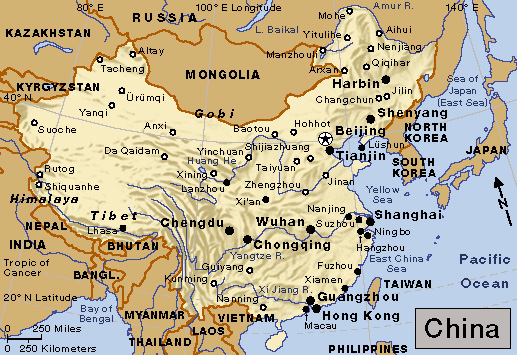Jiangsu Province is an important agricultural and industrial province in eastern China. Its name is also spelled Kiangsu. The province has an area of 39,600 square miles (102,600 square kilometers). Nanjing is the province’s capital and largest city. Jiangsu is one of the most densely populated provinces in China.

Flat plains cover much of Jiangsu. The province has abundant supplies of water. Jiangsu has about 600 miles (1,000 kilometers) of coastline. In the southern part of the province, the Yangtze River empties into the East China Sea. The Grand Canal flows through western Jiangsu. Tai Lake, on the province’s southern border, is one of the largest freshwater lakes in China.
Jiangsu’s mineral deposits include clays, coal, copper, and phosphorus. Its main crops include cotton, fruits, peanuts, rice, vegetables, and wheat. Farmers also raise cattle, goats, hogs, and poultry. Aquaculture, the commercial raising of animals and plants that live in water, is an important industry. Carp, crabs, and eels are among the most valuable catches. Manufactured products include chemicals, household appliances, television sets, and textiles. Nanjing is a major industrial center.
Jiangsu has a long and rich history. Villages first appeared in Jiangsu over 6,000 years ago. Suzhou is one of the oldest cities in China. According to tradition, it was founded in 514 B.C. Liu Bang, the Chinese emperor who founded the Han dynasty (206 B.C.-A.D. 220), was born near the city of Xuzhou in about 248 B.C.
During several periods in the A.D. 200’s to 500’s, Nanjing served as the capital of various local Chinese dynasties. From 1368 to 1421, the city was the first capital of the Ming dynasty (1368-1644). Nanjing also served as the capital of China from 1928 to 1937, and later from 1946 to 1949.
See also Grand Canal; Nanjing
